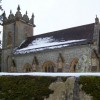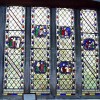King George III’s enthusiasm for Weymouth was the making of the resort but it was the Duke of Gloucester who had first brought Royal patronage to the town when he built what was known as Gloucester Lodge on an open field facing the sea between what was then the northern limit of the town and the new Royal Hotel. In 1789 the king was advised to try the newly recognised ‘cure’ of sea bathing and the Duke lent his seaside home to his elder brother the King. In 1805 the King and the Royal Family stayed at Royal Lodge (as it had become known) from July until October but the holiday atmosphere was marred when news arrived of the death of the Duke of Gloucester, an event that deeply affected the King. On October 4th the King and his Court departed from Weymouth; he was never to return.
In the autumn of 1809 three of the King’s children returned to Weymouth and stayed from September until early November. The Princesses Amelia and Mary arrived ahead of their brother Prince Adolphus, Duke of Cambridge. This was a quiet holiday: Amelia was already seriously ill and she died the following year. The local press reported that Amelia benefited from her stay and was taken into the bay in a bathing machine “for the purposes of inhaling the sea air in its greater purity.” Princess Mary spent most of her time with her sister, just occasionally taking short walks on the esplanade and sands, accompanied by Adolphus or other members of the Royal Family who paid brief visits to Royal Lodge during this time; they included the Prince of Wales and the Dukes of York, Clarence and Kent.
The Price of Wales – Prince Regent from 1811 onwards – did not share his father’s affection for Weymouth. His daughter, Princess Charlotte of Wales had, while still a small child, accompanied her grandparents to Weymouth. She returned to the resort in 1814 and 1815 for long holidays at Royal Lodge. There exists a report of the eighteen-year-old Princess on one occasion referring to the town “as this odious place;” perhaps she was out of sorts because she seems generally to have enjoyed her stays at Weymouth.
She enjoyed the welcome given to her by local people and found the scenery around Weymouth much to her liking, as her grandfather had. The princess would travel in her carriage to the local villages and often stopped to talk to the inhabitants, as well as visiting the houses of the leading Dorset families. She seems to have inherited her grandfather’s love of the sea and used a naval guard ship as a Royal Yacht. This was in contrast to most female members of the Royal Family: a diarist in Weymouth in the 1790’s commenting on the royal trips in the channel wrote: “The King never seemed afraid of the weather. The Queen and the Princesses always wore dark blue habits on these occasions and I have often seen them looking very miserable and bedraggled on their return.”
Princess Charlotte’s visit in 1815 was such a success it prompted the author of one Weymouth Guide to optimistically predict “…it is generally believed that Weymouth will be the future summer residence of Her Royal Highness.” The following year Princess Charlotte Augusta married Prince Leopold of Saxe Coburg and in 1817 she died in childbirth.
On the 25th of October 1809 – the King’s Jubilee – Weymouth celebrated by laying the foundation stone to the statue of King George III, an event that was attended by the Duke of Cambridge and Princess Mary. Newspaper reports make no mention of any members of the Royal family being present when the completed statue was unveiled the following year. Later Princess Mary married her cousin the Duke of Gloucester, the son of the builder of Royal Lodge, and she was in residence there in November 1817, when the news of the death of the young Princess Charlotte of Wales came. This was the last visit to Weymouth of any member of the family of King George III.
Following the death of George III, the Royal Lodge was sold on the 19th July 1820 for £4,000 and the Royal Pew in St. Mary’s Church was sold for £220.10s at the same time. Houses adjoining the Royal Lodge that had been used to accommodate members of the Royal family were also sold-off and reportedly fetched high prices. The furniture was sold separately and the enormous prices paid reflected the added value achieved with each piece being considered a relic of departing royalty.
The economic benefits gained by the town from the occasional royal visits after 1805 would have been small but the benefits of many years of patronage by the King were considerable. Thomas’s Weymouth Guide of 1815 says “…the inhabitants by such an influx of money have been encouraged to rebuild, beautify, and greatly enlarge the town, which in little more than twenty years has undergone a considerable transformation.”
Weymouth was now established as a seaside resort and the expansion begun in the days of ‘Royal Weymouth’ continued throughout the rest of the nineteenth century, considerably helped by the coming of the railway in 1857.



